Blending essential oils based on chemical components
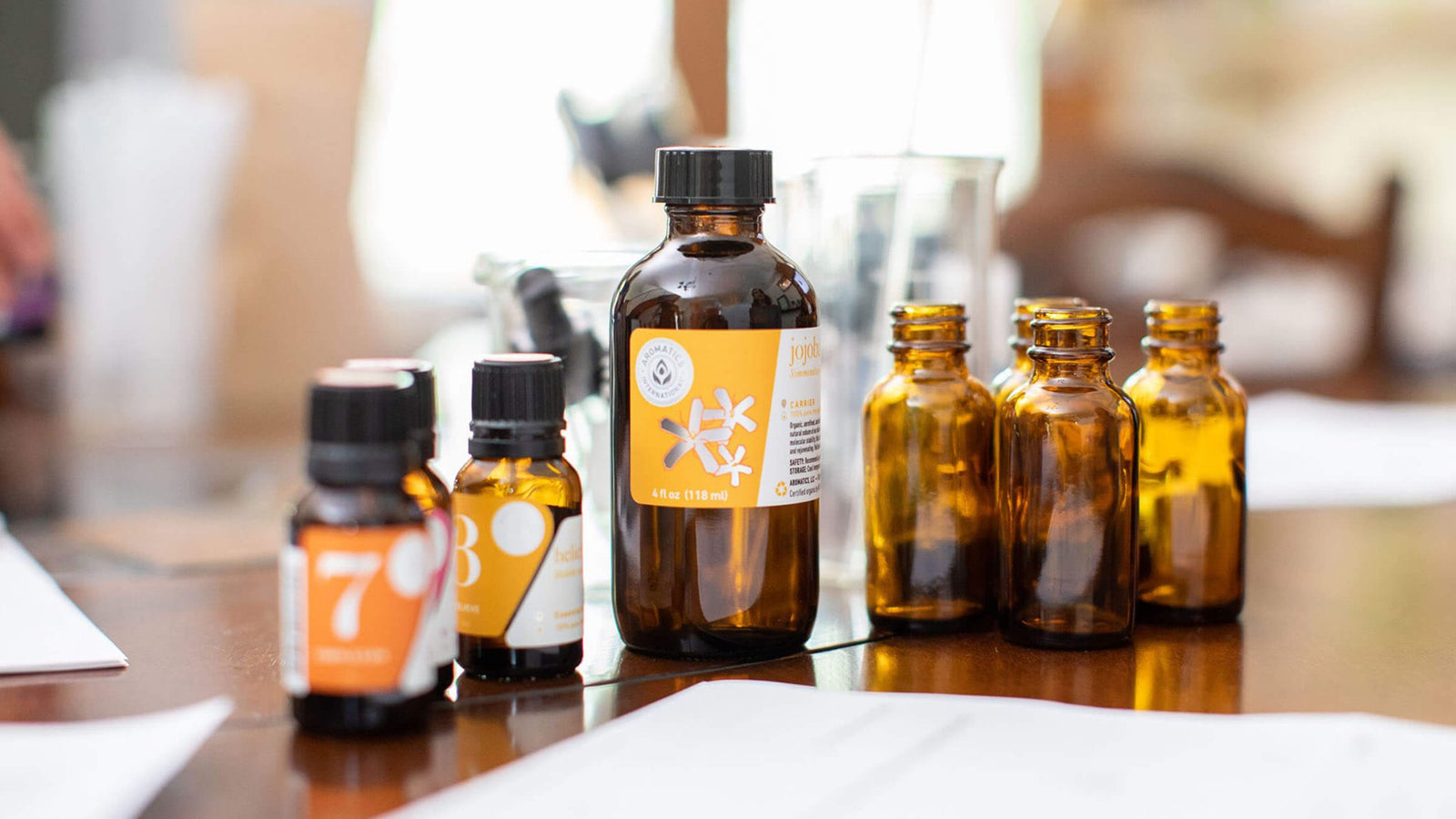
Blending essential oils based on chemical components
Use this blending technique to:
- Make chemistry-based blends
- Target specific physical issues without causing negative reactions
- Blend for clients in a natural healthcare or clinical setting
Considering the chemical components present in an essential oil lets you create research-based blends, targeting very specific issues for your clients.
It also allows you to avoid components which aren’t safe for your client to be exposed to. (For example, your client should avoid oils rich in the component citral if she’s a nursing mother.)
There are literally hundreds of individual components, and most essential oils contain dozens of them. In this guide, we’ll focus on seven chemical components that show up in some of the most commonly used essential oils. If you pay attention to the components that are present in your oils, you’ll notice these particular components appear often. Understanding them will give you a strong foundation of knowledge about basic essential oil chemistry (even if you don’t consider yourself a “science person!”).
Before we dive into the individual components, let’s touch on another science-based approach to blending: considering the chemical family you’d like to work with.
Chemical components are grouped into families based on the size, shape, and structure of their molecules. Karen Williams (co-owner of Aromatics) wrote an in-depth blog post about the chemical families, which gives you another option for creating therapeutic blends.
read it hereNow let’s talk chemical components!
1,8-cineole

1,8-cineole is in the oxide chemical family.
You might recognize oils containing this component by its characteristic scent: 1,8-cineole is fresh and penetrating! This is what gives eucalyptus oil its crisp aroma (and much of its breath-opening effect). In fact, 1,8-cineole is the main component in eucalyptus, and is also known as “eucalyptol.”
1,8-cineole has been researched and shown to:
- Reduce the presence of germs (6)
- Protect immunity during cold season (9)
- Relieve local soreness in skin, muscles, and joints (30)
- Get energy flowing to the head (5)
- Open the breath and support the airways (23)
1,8-cineole is a powerful component. Its effects can be immediate and strong.
Safety considerations for 1,8-cineole-rich oils:
- 1,8-cineole may be too strong for people with breathing issues, such as asthma. Have them smell the lid of the bottle, and ask if it makes their chest feel more open or tight. If their chest feels tight (or they have a negative response to the oil), leave the 1,8-cineole oils out of their blend.
- This potent component can be too strong for children under 5 years old, especially if it’s used near their faces. Use it with caution for children up through age 10.
A few essential oils that contain 1,8-cineole are:
Recipes with 1,8-cineole-rich oils:
Citral

Citral is in the aldehyde chemical family.
This component is interesting, because it’s not an individual component. What we call “citral” is a combination of the components neral and geranial. When neral and geranial appear together in significant amounts, they form citral.
Citral has been researched and shown to:
- Reduce the presence of germs (2)
- Protect immunity during cold season (19)
- Deeply relax the body, heart, and mind (3)
- Prevent the growth of fungi (29)
- Soothe local soreness in muscles, and joints (24)
Characteristic of the aldehyde chemical family, citral is a very potent component. It can cause serious irritation.
Safety considerations for citral-rich oils:
- Citral can seriously irritate skin and mucous membranes. Use a low drop count (about a 0.9% dilution) in blends, and combine these oils with skin-nourishing carriers and gentle essential oils.
- Reserve citral-rich oils (and all aldehyde-rich oils) for acute issues, and short periods of time (rather than long-term, chronic issues).
- Citral-rich oils are too strong for babies and children.
- Avoid using citral-rich oils for pregnant women and nursing mothers.
- Oils rich in citral tend to have short shelf lives because they oxidize easily… rendering them even more skin irritating. Be sure to keep your citral-rich oils fresh, and store them in a closed bottle in a cool, dark area (like all of your oils).
A few essential oils rich in citral are:
Recipes with citral-rich oils:
Eugenol

Eugenol is in the phenol chemical family.
Clove bud oil has a characteristic warm, spicy scent, which is largely thanks to eugenol. Traces of that aroma show up wherever eugenol goes, alerting you that the oil is incredibly potent against sickness (and potentially irritating).
Oils rich in eugenol are also well known for their warming touch and ability to soothe soreness.
Eugenol has been researched and shown to:
- Relieve local soreness in muscles and joints (8)
- Reduce the presence of germs (10)
- Protect immunity during cold season (27)
- Prevent the growth of fungi (22)
- Stimulate energy flow at the area of application (21)
Like the aldehyde chemical family, phenols are powerful and should be treated with the utmost respect. Eugenol can cause serious irritation.
Safety considerations for eugenol-rich oils:
- Eugenol can seriously irritate skin and mucous membranes. Use a low drop count (a 0.5% dilution or lower) in blends, and combine these oils with skin-nourishing carriers and gentle essential oils.
- Don’t use eugenol-rich oils on broken or damaged skin.
- Eugenol-rich oils are too strong for babies and children.
- Avoid using eugenol-rich oils in a bath.
- Reserve eugenol-rich oils (and all phenol-rich oils) for acute issues, and short periods of time (rather than long-term, chronic issues).
- Eugenol-rich oils should be avoided if your client is taking MAO inhibiting or SSRI antidepressant drugs, or has liver damage.
A few essential oils rich in eugenol are:
Recipes with eugenol-rich oils:
Limonene

Limonene is in the monoterpene chemical family.
It’s easy to remember which essential oils contain limonene! The word itself is related to the Latin name for lemon—Citrus limon. Limonene is present in lemon, as well as all of the other citrus essential oils (and a few others).
Limonene has been researched and shown to:
- Open the breath during cold and allergy season (20)
- Reduce the presence of germs (15)
- Soothe local soreness in muscles and joints (12)
- Support the cleansing and detox process (32)
- Inspire optimistic, energetic emotions (16)
There’s no evidence pointing to specific safety concerns for limonene. (Follow the safety tips in Chapter 2 of this guide, and for individual essential oils.) Limonene-rich oils can be used regularly over a long period of time.
A few essential oils rich in limonene are:
Recipes with limonene-rich oils:
- Coconut Orange Tropical Salt Scrub
- Lemongrass and Lime Liquid Soap
- Citrus Fall Sparkle Diffuser Blend
Linalool

Linalool is in the monoterpenol chemical family.
Linalool is one of the main components found in lavender essential oil. When this component shows up in an essential oil, you can make an educated guess that the oil is gentle on skin and profoundly emotionally calming. You may also see it spelled “linalol.”
Linalool has been researched and shown to:
- Soothe irritated, damaged skin (and help skin to repair itself) (26)
- Relieve local soreness for muscles and joints (11)
- Reduce the presence of germs and fungi (15)
- Inspire relaxed, calm emotions (13)
- Support deep, restorative sleep (31)
There’s no evidence pointing to specific safety concerns for linalool. (Follow the safety tips in Chapter 2 of this guide, and for individual essential oils.) Linalool-rich oils can be used regularly over a long period of time.
A few essential oils rich in linalool are:
Recipes with linalool-rich oils:
A-Pinene

A-pinene is in the monoterpene chemical family.
As its name suggests, a-pinene shows up in many conifer essential oils (As does it’s “sibling,” b-pinene). Yet this component is present in a wide variety of other oils, too: frankincense, kunzea, and myrtle all contain a-pinene.
A-pinene has been researched and shown to:
- Reduce the presence of germs (7)
- Protect immunity during cold season (1)
- Relieve local soreness in muscles and joints (17)
- Open the breath during cold and allergy season (18)
- Comfort the throat (28)
There’s no evidence pointing to specific safety concerns for a-pinene. (Follow the safety tips in Chapter 2 of this guide, and for individual essential oils.) A-pinene-rich oils can be used regularly over a long period of time.
A few essential oils rich in a-pinene are:
Recipes with a-pinene-rich oils:
Terpinen-4-ol

Terpinen-4-ol is in the monoterpenol chemical family.
It’s one of the main components found in tea tree essential oil, and plays a major role in tea tree’s ability to clear a wide variety of microbes. Yet while oils rich in this component have strong action against germs, they also tend to be gentle on skin.
Terpinen-4-ol has been researched and shown to:
- Reduce the presence of germs (15)
- Protect immunity during cold season (1)
- Prevent the growth of fungi (25)
- Open the breath during allergy season (4)
- Soothe irritated skin (14)
There’s no evidence pointing to specific safety concerns for terpinen-4-ol. (Follow the safety tips in Chapter 2 of this guide, and for individual essential oils.) Terpinen-4-ol-rich oils can be used regularly over a long period of time.
A few essential oils that contain terpinen-4-ol are:
Recipes with terpinen-4-ol-rich oils:
CITATIONS:
1. Astani A, Reichling J, Schnitzler P (2010) Comparative study on the antiviral activity of selected monoterpenes derived from essential oils. Phytotherapy Research 24(5):673-9. doi: 10.1002/ptr.2955
2. Boukhatem, M.N., Ferhat, M.A., Kameli, A., Saidi, F. and Kebir, H.T. (2014) Lemon grass (Cymbopogon citratus) essential oil as a potent anti-inflammatory and antifungal drug. Libyan Journal of Medicine 9, 25431.
3. Bounihi, A., Hajjaj, G., Alnamer, R., Cherrah, Y. and Zellou, A. (2013) In vivo potential anti-inflammatory activity of Melissa officinalis L. essential oil. Advances in Pharmacological Sciences doi: 10.1155/2013/101759.
4. Brand, C., Townley, S., Finlay-Jones, J and Hart, P. (2002) Tea tree oil reduces histamine- induced oedema in murine ears. Inflammation Research 51, 283-289.
5. Buchbauer, G. (1996) Methods in Aromatherapy Research. Perfumer and Flavorist 21, 31-36.
6. Cermelli, C., Fabio, A., Fabio, G. and Quaglio, P. (2008) Effect of eucalyptus essential oil on respiratory bacteria and viruses. Current Microbiology 56, 1, 89-92.
7. Da Silva AC, Lopes PM, de Azevedo MM, Costa DC, Alviano CS, Alviano DS. (2012) Biological activities of a-pinene and ß-pinene enantiomers. Molecules 2012 17, 6305–16.
8. Daniel, A.N., Sartoretto, S.M., Schmidt, G., Caparroz-Assef, M., Bersani-Amado, C.A. and Cuman, R.K.N. (2008) Antiinflammatory and antinociceptive activities of eugenol essential oil in experimental animal models. Brazilian Journal of Pharmacognosy 19, 212-217.
9. Edris, A.E. (2007) Pharmaceutical and therapeutic potentials of essential oils and their individual volatile constituents: a review. Phytotherapy Research 21, 308-323.
10. Fu, Y.-J., Zu, Y.-G., Chen, L.-Y., Shi, X.-G., Wang, Z., Sun, S. and Efferth, T. (2007) Antimicrobial activity of clove and rosemary essential oils alone and in combination. Phytotherapy Research 21, 989-994.
11. Guimarães, A.G., Quintans, J.S.S. and Quintans-Júnior, L.J. (2013) Monoterpenes with analgesic activity – a systematic review. Phytotherapy Research 27, 1-15.
12. Hirota, R., Roger, N.N., Nakamura, H., Song, H.-S., Sawamura, M., and Suganuma, N. (2010) Anti-inflammatory effects of limonene from yuzu (Citrus junos Tanaka) essential oil on eosinophils. Journal of Food Science 75, 87-92.
13. Hoya, Y., Matsumura, I., Fujita, T. and Yanaga, K. (2008) The use of nonpharmacological interventions to reduce anxiety in patients undergoing gastroscopy in a setting with an optimal soothing environment. Gastroenterology Nursing 31, 6, 395-399.
14. Koh, K., Pearce, A., Marshama, G., Finlay-Jones, J. and Hart, P. (2002) Tea tree oil reduces histamine-induced skin inflammation. British Journal of Dermatology 147, 1212-1217.
15. Lang G, Buchbauer G. (2012) A review on recent research results (2008-2010) on essential oils as antimicrobials and antifungals. A review. Flavour and Fragrance Journal 27, 13-39.
16. Lima, N.G., de Souza, D.P., Pimenta, F.C., Alves, M.F., de Souza, F.S., (2012) Anxiolytic-like activity and GC-MS analysis of (R)-(+)-limonene fragrance, a natural compound found in foods and plants. Pharmacology, Biochemistry and Behavior 103, 450-454.
17. Martin S, Padilla E, Ocete M A, Galvez J, Jimenez J, Zarzuelo A. (1993) Anti-inflammatory activity of the essential oil of Bupleurum fruticescens. Planta Medica 59, 6,533-536
18. Meister R, Wittig T, Beuscher N et al. (1999) Efficacy and tolerability of myrtol standardized in long-term treatment of chronic bronchitis. A double-blind, placebo-controlled study. Study Group Investigators. Arzneimittelforschung 49,351-358.
19. Minami, M., Kita, M., Nakaya, T., Yamamoto, T., Kuriyama, H. and Imanishi, J. (2003) The inhibitory effects of essential oils on herpes simplex type-1 replication in vitro. Microbiology and Immunology 47, 681-684.
20. Mitoshi, M., Kuriyama, I., Nakayama, H., Miyazato, H., Sugimoto, K., Kobayashi, Y., Jippo, T., Kuramochi, K., Yoshida, H. and Mizushina, Y. (2014) Suppression of allergic and inflammatory responses by essential oils derived from herbal plants and citrus fruits. International Journal of Molecular Medicine 33, 1643-1651.
21. Peixoto-Neves, D., Leal-Cardoso, J., Jaggar, J. (2014) Eugenol dilates rat cerebral arteries by inhibiting smooth muscle cell voltage-dependent calcium channels. Journal of Cardiovascular Pulmonology 64, 5, 401-406.
22. Pinto, E., Vale-Silva, L., Cavaleiro, C. and Salguero, L. (2009) Antifungal activity of the clove essential oil from Syzygium aromaticum on Candida, Aspergillus and dermatophyte species. Journal of Medical Microbiology 58, 11, 1454-1462.
23. Price, S. and Price, L (2007) Aromatherapy for Health Professionals 3rd Edition. Edinburgh: Churchill Livingstone.
24. Quintans-Júnior, L.J., Guimarães, A.G., Santana, M.T., Araujo, B.E.S., Moreira, F.V., Bonjardim, L.R.; Araujo, A.A.S.,Siqueira, J.S., Antoniolli, A.R. and Botelho, M.A. (2011) Citral reduces nociceptive and anti-inflammatory response in rodents. Brazilian Journal of Pharmacognosy 21, 497-502.
25. Ramage, G., Milligan, S., Lappin, D.F., Sherry, L., Sweeney, P., Williams, C., Bagg, J. and Culshaw, S. (2012) Antifungal, cytotoxic, and immunomodulatory properties of tea tree oil and its derivative components: potential role in management of oral candidosis in cancer patients. Frontiers in Microbiology 3, 220, doi: 10.3389/fmicb.2012.00220. eCollection 2012.
26. Rivot, J. P., Montagne-Clavel, J. and Besson, J. M. (2002) Subcutaneous formalin and carrageenan increase nitric acid release as measured by in vivo voltammetry in the spinal cord. European Journal of Pain 6, 25-34.
27. Saad, N.Y., Muller, C.D. and Lobstein, A. (2013) Major bioactivities and mechanism of action of essential oils and their components. Flavour and Fragrance Journal 28, 269-279.
28. Sadraei H, Asghari GR, Hajhashemi V et al. (2001) Spasmolytic activity of essential oil and various extracts of Ferula gummosa Boiss. on ileum contractions. Phytomedicine 8,370-376.
29. Silva, B., Guterres, S.S., Weisheimer, V. and Schapoval, E.E. (2008) Antifungal activity of the lemongrass oil and citral against Candida spp. Brazilian Journal of Infectious Diseases 12, 63-66.
30. Silva, J., Abebe, W., Sousa, S.M., Duarte, V.G., Machado, M.I.L. and Matos, F.J.A. (2003) Analgesic and anti-inflammatory effects of essential oils of eucalyptus. Journal of Ethnopharmacology 89, 277-83.
31. Takahashi M, Satou T, Ohashi M, Sadamoto K, Koike K. (2011) Interspecies comparison of chemical composition and anxiolytic-like effects of lavender oils upon inhalation. Natural Product Communications 6, 11, 1769-1774.
32. Tisserand, R. and Young, R. (2014) Essential Oil Safety 2nd Edition. Edinburgh: Churchill Livingstone.
Blending essential oils based on chemical components

Aromahead Institute is the world's leading online aromatherapy school. Our comprehensive courses offer a wealth of knowledge and are designed for every level from those new to the world of aromatherapy to seasoned professionals.
Aromatics was founded to live up to Aromahead Institute’s purity and quality standards to support their education platform
Join Our Newsletter
Save 15% on your first order
Aromatherapy sent directly to your inbox. Receive tips, essential oil recipes, promotion alerts, live events and more. We look forward to connecting with you! *Exclusions apply.

 1.
1.  2.
2.  3.
3.  1.
1.  2.
2.  3.
3.  1.
1.  2.
2.  3.
3.  1.
1.  2.
2. 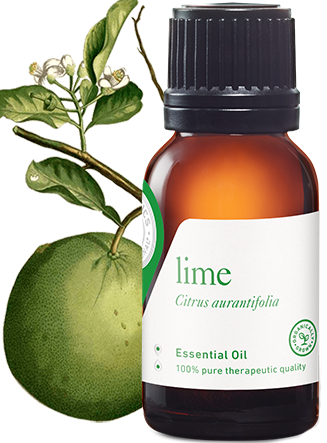 3.
3.  1.
1. 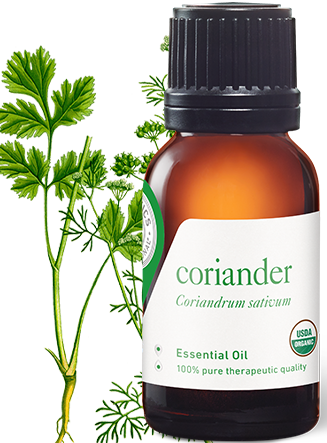 2.
2.  3.
3.  1.
1. 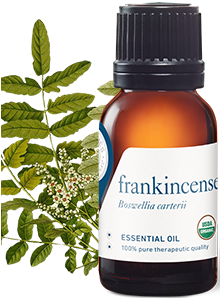 2.
2.  3.
3.  1.
1.  2.
2. 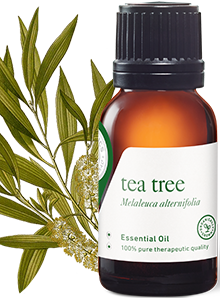 3.
3.